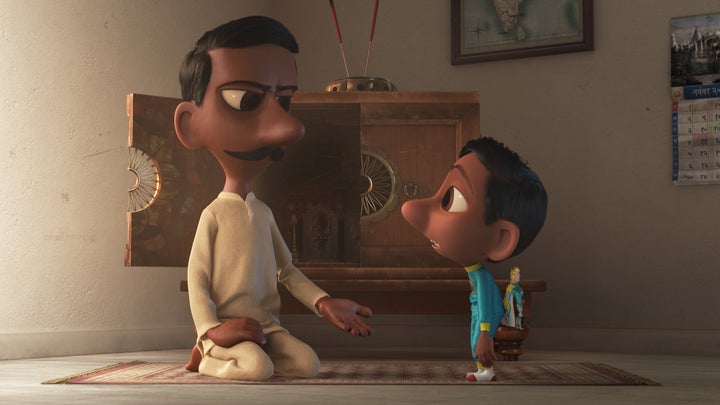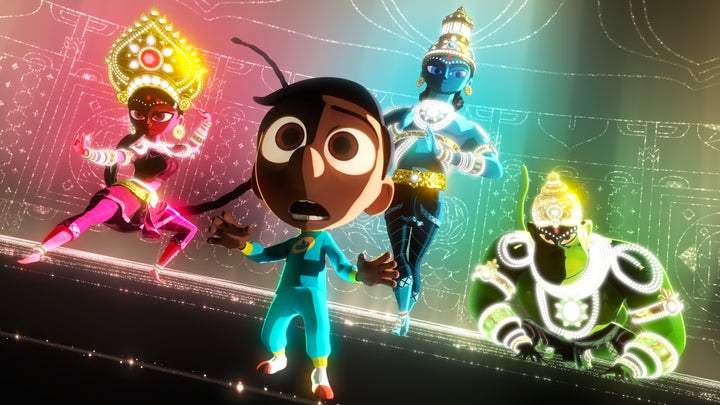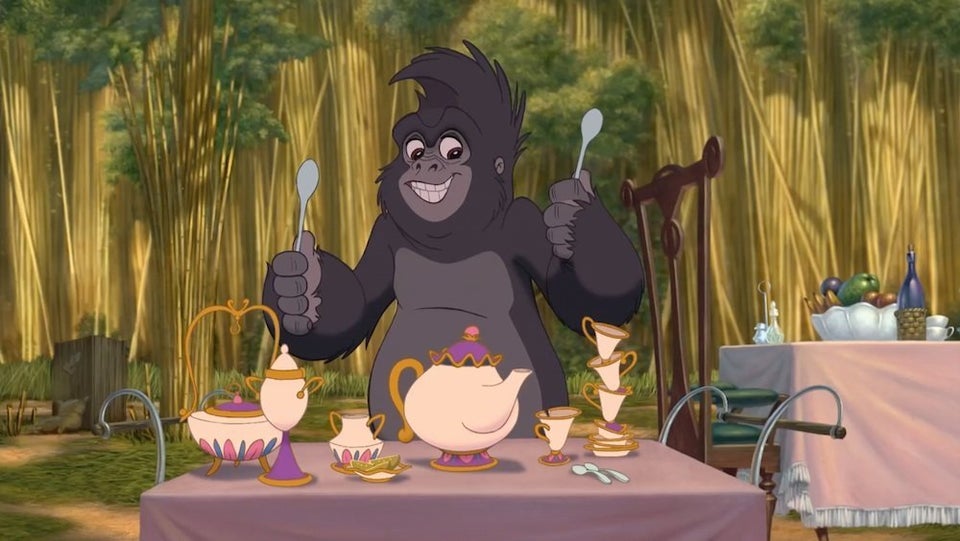Pixar movies are double features. If you bought a ticket for "A Bug's Life" back in 1998, you probably remember "Geri's Game," the opening short film about an elderly chess prodigy who competes against himself. Seventeen years and 11 shorts later, 2015 became the first time the studio released two movies in the same year. "Inside Out" gave us the Hawaiian volcano romance "Lava," and "The Good Dinosaur" prompted some of Pixar's best reviews with the reverie "Sanjay's Super Team."
While the maudlin, uninspired "Lava" didn't fare well with critics, "Sanjay's Super Team" became an instant Pixar classic when "The Good Dinosaur" opened in November. On Feb. 28, it will compete for the Oscars' Best Animated Short Film prize, which has netted Pixar 12 nominations and three wins. (Watch an exclusive featurette about the creation of "Sanjay" above.)
"Sanjay's Super Team" is poignant because it's far more personal than a lot of Pixar's catalog. Whereas most shorts feel like miniature versions of what could be full-length features, "Super Team" is an autobiography sandwiched into a seven-minute morsel. Inspired by director Sanjay Patel's own childhood, the film earned raves for its portrayal of a young Indian boy who resents being pulled away from his Western action figures and comic books and superhero shows for daily meditations with his devout Hindu father.

Patel, who struggled for years to accept his Indian identity while growing up in California in the 1980s, pitched the idea for the short in 2012. The Pixar vet's credits included animation work on "A Bug's Life," "The Incredibles" and "Ratatouille," but "Sanjay's Super Team" became Patel's directorial debut.
Encouraged by Pixar chief John Lasseter, he conceptualized the dialogue-free story of a meditation session where little Sanjay's action figures morph into Hindu gods, bridging the native culture he wishes to reject with the livelier one he favors. (If the movie were a direct retelling of Patel's life, the action figures would be the dollar bills that Patel used to crib from his family's spiritual shrine.)
It took Patel years to embrace the Hindu orthodoxy that always felt irrelevant and isolating to him. "The cosmic irony is that, 30 years later, who would have ever thought that I would be completely smitten by the mythology of these same deities?" Patel told The Huffington Post via phone last week. He was so smitten, in fact, that he studied the revered Indian epic poem the "Ramayana" and made Hindu-inspired pop art before directing "Sanjay's Super Team."
Patel called the process of revisiting his father's spiritual practices "healing."

"Having been [at Pixar] now for 20 years, since I hadn’t seen anything that was so culturally specific, I just didn’t think that was what we would do or would be interested in," Patel said. "I was really convinced of that. The thing that I think is so hard to articulate is when you grow up as a person of color without seeing much representation of yourself or your family out there, you just don’t think it’s relevant to the cultural conversation. It really took John Lasseter to stand up and say, 'No, Sanjay, tell your story -- tell the truth of seeing your father’s experience. If we do that, and if we really stay true to your father’s experience, it will resonate.'"
And it has. As important as it is to see Pixar feature another character of color, a la the Asian "Up" protagonist Russell, "Sanjay's Super Team" transcends the cultural disparities that cement its themes. It's as much a story about the evolving bond of a parent and child, or the restlessness of young ennui, or simply accepting one's heritage. It ends with an extra token from Patel's life, per Lasseter's suggestion: actual photos of Patel and his father.
"For so long, it had been so hard, as if I could hide my Indian identity," he said. "My name is Sanjay Patel. But growing up, it was so hard for me to inhabit my name, my skin and my identity. It’s been really healing to know that people are OK with it, that people are in fact delighted with it and in fact people want more of it. That’s the response that’s been healing for me, not just as a filmmaker but as a person of color."
Also on HuffPost:



